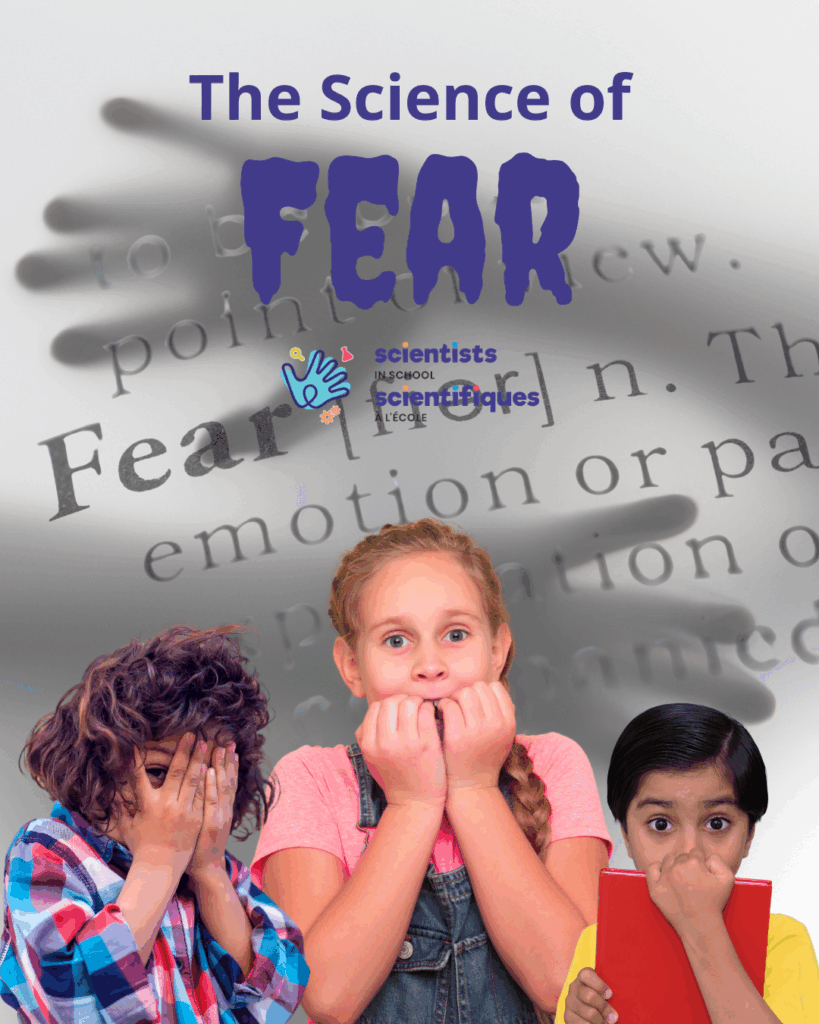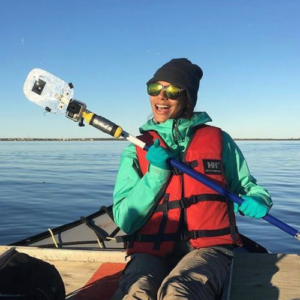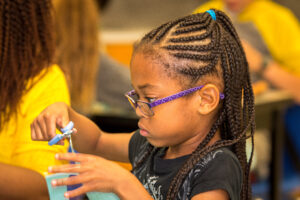Why do we feel afraid?
It’s ok to get scared. In fact, sometimes it’s lifesaving. But why do we feel fear?
The APA Dictionary of Psychology defines fear as an intense emotion caused when you detect a threat to your wellbeing. Fear triggers a set of physiological – that’s internal and physical – changes that help you to take action to protect yourself.
So, how does fear work in the body? It’s a chain reaction. Several systems start working hard: your brain sends out signals that make your heart race, your breathing picks up speed, and your muscles tense. The heart and lungs fuel your body with the oxygen it needs to make the next decision: face the scary thing, or run from it. That decision is called the fight or flight response.
Explore the STEM of bodies and bones in two of our biology workshops! Click here.
In the workshop Every Body Moves, pop into the inner workings of the human body. Create a model to learn how body systems work together to set an arm in motion. Experiment to discover which fuel source works best to energize us. Explore how the body removes waste products. Movement is part of every body!
Hooo’s in the Owl Pellet? Let’s kids experience being a real-life biologist! Use an integrated STEM approach to investigate the diet of an owl and estimate the prey number and type. Dissect an owl pellet, sort and identify bones. Opportunities pre- and post-workshop to enhance your student’s literacy, numeracy and visual arts activities by integrating owl pellet dissection and analysis into your program.
Learn about all of the classroom workshops available in your area here: https://scientistsinschool.ca/workshops/schools/
The purpose of fear is to help you deal with a challenge. It starts in the brain, which activates action across the whole body. Fear is closely tied to emotions and often reflects and amplifies what you feel. That is why fear is studied by psychologists and biologists!
Did you know there’s at least one person in the world who is totally fearless? Click here to learn more.
That’s right, due to a very rare genetic disorder called Urbach-Wiethe disease, it’s estimated that around 400 people in the world don’t feel fear. It makes horror movies no fun at all. But more seriously, they can find it difficult to judge risk, and therefore may need help from others to make sure they stay safe from things that could hurt them.
Fear is an emotional and physical response that could save your life. We evolved to feel afraid so that we could deal with things that could harm us. Fear is an important part of our risk assessment strategies, and that fight or flight response serves to prompt us to get out of a dangerous situation however we can. It’s both psychological and biological, but perhaps most surprisingly of all, it can be fun.
Conquering fears with science: having fun with being scared, and being scared in order to have fun
Remember all of those chemical reactions your brain kicks off when you feel scared? Well, in the right situation, for many people those reactions can be fun!
If you’ve ever been on a rollercoaster or a fast-spinning fair ride, you know the feeling: your heart beats faster, your breathing speeds up, and maybe you throw your hands up in the air and scream-laugh your way through the ride. That feeling is caused by the biochemicals flowing through your body.
Things like adrenaline, dopamine, and endorphins not only make you more able to act quickly as we talked about before, they can heighten enjoyment as well. Seasonal attractions like haunted houses may scare you in the moment, but studies show that most people actually feel more happy after a controlled frightening experience.
But what if your fear doesn’t turn into fun when it’s over? Do you want to conquer a fear? Science says gradual exposure to what scares you can help, like taking part in our workshop all about creepy crawlies: Intriguing Invertebrates! If you’re afraid of bugs, seeing videos of them or getting to explore how they work in a safe environment can help diminish your fear over time.
Click here to learn more about our workshop Intriguing Invertebrates.
Who has thousands of teeth? Who can float on water? Are you intrigued? Students will learn about the invertebrates in their own backyards by creating models of these creatures. Physical characteristics, habitats they live in, and the way they move and eat will be investigated with hands-on and engaging activities. Find out if this workshop is available in your area: https://scientistsinschool.ca/workshops/schools/
Additionally, those fun-scary experiences we talked about earlier could help too. Studies show that when we get scared or activate our fear response while doing something fun, we can actually reset our sense of fear. If you’ve just gone on a wild rollercoaster, when you get off the ride safely, it can feel like your other fears are similarly no big deal for a while.
Fear can be contagious, but so can courage
Emotions can be contagious and so can fear. Emotional contagion is a concept from psychology which says that you unconsciously mimic the emotions of those around you. Think about a time someone smiled at you and how it made you feel. Did you smile too? That’s emotional contagion!
Emotional contagion can trigger your fear response without you even consciously knowing. For example, if you’re walking through a narrow corridor in a haunted house right behind your friend and they get startled by something you can’t see, chances are you will jump too. At the same time, being with your friend in a scary situation can make it easier to face. If fear and happiness can be contagious, then so can bravery.
Further reading and STEM resources for kids and teachers

- Make a mummy out of an apple with your littlest learners with this free resource from our seasonal bunch.
- Our Ewww That Science is Gross Triva Game explores every kid’s favourite thing: icky stuff!
- Have a scientifically terrific time in the vacuum of space with our workshop, Our Place in Space, or face the fear of heights in the workshop Up in The Air! Check to see about availability in your school board.
- Learn more about the science of fear with this article from Science World.
Scientists in School is a Canadian science outreach charity dedicated to sparking children’s interest in STEM through hands-on discovery. Explore our workshops and help us turn your young learners into young scientists.








